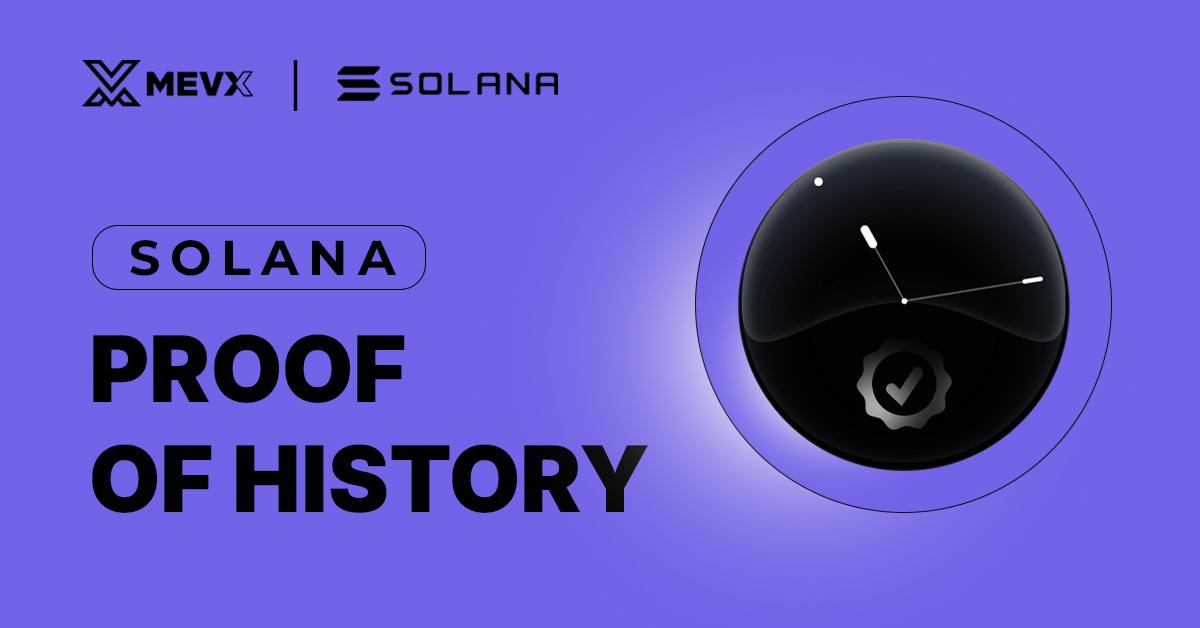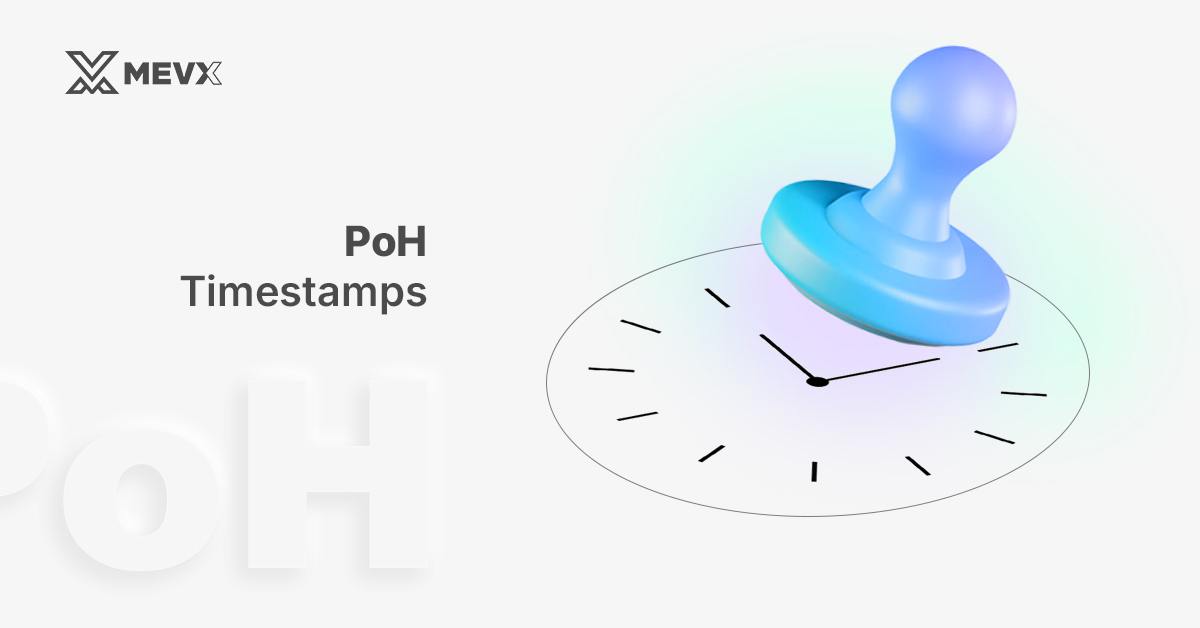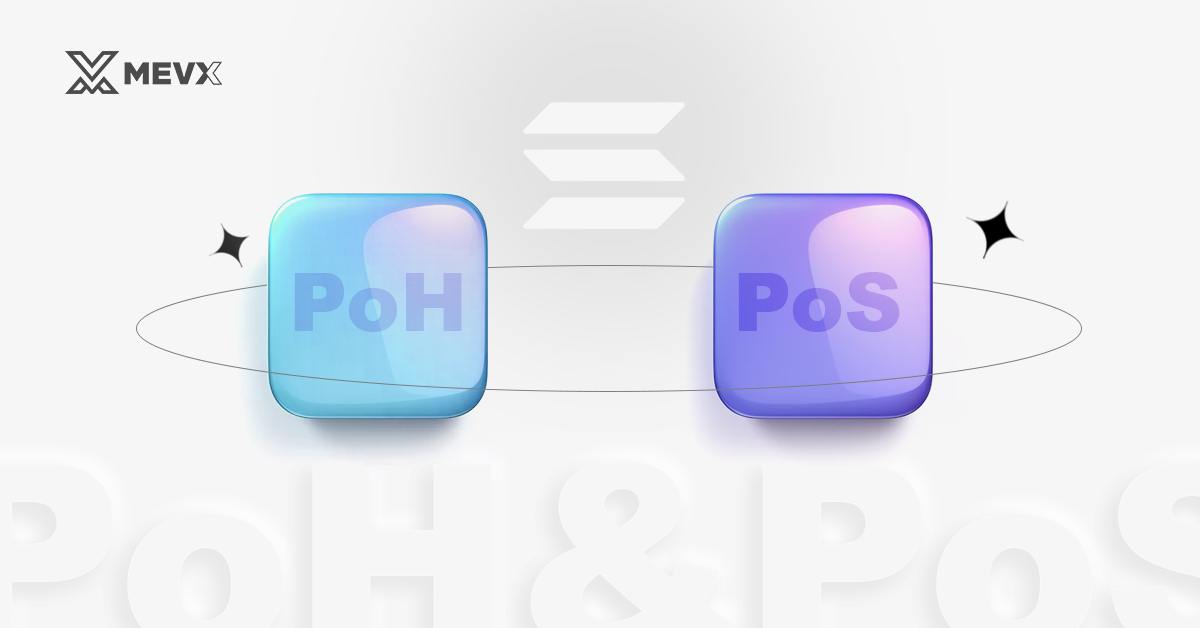In blockchain technology, achieving both speed and security has long been a challenge, with networks often forced to sacrifice one for the other. However, Solana, one of the most prominent next-generation blockchains, has broken this paradigm through its unique consensus mechanism known as Proof of History (PoH). This innovative technology not only enhances efficiency but also allows Solana to process an unprecedented number of transactions per second (TPS), paving the way for high-performance decentralized applications (dApps). In this article, we dive into the mechanisms behind PoH, how it complements Proof of Stake (PoS), and why it’s fundamental to Solana’s success.

Solana’s Proof Of History
What is Proof of History (PoH) and why is it Unique to Solana?
Proof of History (PoH) is a mechanism designed by Solana’s founder, Anatoly Yakovenko, to address the inherent time limitations in traditional blockchains. PoH isn’t a traditional consensus mechanism by itself but rather a method for timestamping transactions, allowing nodes to establish a historical record of events quickly and independently. The idea of PoH is similar to a decentralized “clock” that everyone in the network agrees on.
In most blockchains, like Bitcoin and Ethereum, transaction ordering requires frequent communication among nodes to reach a consensus on the transaction sequence. This process is inherently slow, as nodes must continuously validate and confirm events. PoH takes a different approach by using a cryptographic function that assigns each transaction a unique timestamp. This timestamp verifies when a transaction or event took place, ensuring that events on the blockchain follow a precise order without constant communication, which is a major innovation unique to Solana.
How PoH Timestamps Improve Blockchain Efficiency
The core function of PoH is to create a sequence of cryptographic proofs, each proving that an event took place at a specific time. This process works through a recursive Verifiable Delay Function (VDF), where each timestamped proof depends on the output of the previous one. Essentially, each event becomes a “block” in a chain of events, proving that it occurred within a given timeframe.

PoH Timestamps
This streamlined approach to timestamping offers significant efficiency advantages:
- Low-Latency Transactions: Since PoH timestamps transactions before they reach consensus, nodes don’t need to validate timestamps in real-time. This reduces network latency and speeds up transaction processing.
- Reduced Communication Overhead: Unlike traditional blockchains that need constant validation across nodes, PoH allows each node to work more autonomously, reducing communication bottlenecks.
- High Transaction Throughput: The PoH system enables Solana to process up to 65,000 TPS, far surpassing most existing blockchains.
By generating verifiable proofs of time, PoH enables Solana’s network to establish a cryptographic history that nodes can trust, streamlining consensus and enabling transactions to move faster.
The Relationship Between PoH and Proof of Stake (PoS)
Proof of Stake (PoS) is essential for securing the network and ensuring transaction validity, while Proof of History (PoH) addresses the ordering and timestamping of transactions. PoS allows validators to secure the blockchain by staking their tokens, incentivizing them to maintain integrity. Validators are chosen based on the amount of SOL (Solana’s native token) they have staked, which reduces the likelihood of malicious actions by making validators financially invested in the network’s security.

PoH & PoS
When combined, PoH and PoS offer the following advantages:
- Efficient Consensus: PoS provides a layer of security, while PoH provides a timing mechanism that enables validators to confirm transactions quickly. This combined mechanism reduces the computational requirements associated with traditional PoW (Proof of Work) systems.
- Synchronization: Validators rely on PoH to align their actions without extensive communication, which allows them to reach consensus on transactions more efficiently.
- Enhanced Security: The PoS mechanism ensures that validators remain committed to the network’s stability and that malicious actions are financially discouraged, while PoH’s time-stamped record makes it harder for validators to alter transaction history.
By combining PoS for security and PoH for efficiency, Solana achieves a highly optimized consensus model that delivers both speed and security to users.
Benefits of PoH for Scalability and Decentralization
The efficiency of PoH has substantial implications for scalability and decentralization, which are often limited in traditional blockchains due to the challenges of achieving consensus at scale. PoH solves these problems in the following ways:
- Scalability: PoH’s timestamping allows Solana to scale without facing the traditional bottlenecks associated with blockchains like Ethereum and Bitcoin. By ordering events before consensus, Solana can handle up to 65,000 TPS, making it one of the few blockchains capable of supporting real-world applications with high demands, such as decentralized finance (DeFi), gaming, and large-scale NFT marketplaces.
- Decentralization: Decentralization is critical for blockchain security, as it prevents control from being centralized in the hands of a few entities. PoH’s ability to timestamp events independently reduces the need for nodes to constantly synchronize. This enables a greater number of nodes to participate in the network, which enhances decentralization. PoH also encourages a more open validator structure, reducing centralization pressure and ensuring Solana remains accessible to smaller validators and users alike.
Conclusion
Proof of History (PoH) has been a game-changing development that has helped establish Solana as one of the most scalable and efficient blockchains in the market. By offering a cryptographically verifiable timeline for every transaction, PoH could optimize both network speed and security. It can thus handle transactions at a pace equal to centralized systems without sacrifices to decentralization.
Along with Proof of Stake (PoS), PoH provides a unique hybrid consensus model that achieves a perfect balance between high performance and a secure, decentralized framework. This makes Solana one of the most attractive options for developers and users alike, who seek a blockchain capable of enabling new generations of decentralized applications. With its innovations, like PoH, Solana has set a bar in blockchain efficiency and scalability, allowing an idea of what might be expected from the future of high-performance decentralized networks.
Share on Social Media:
